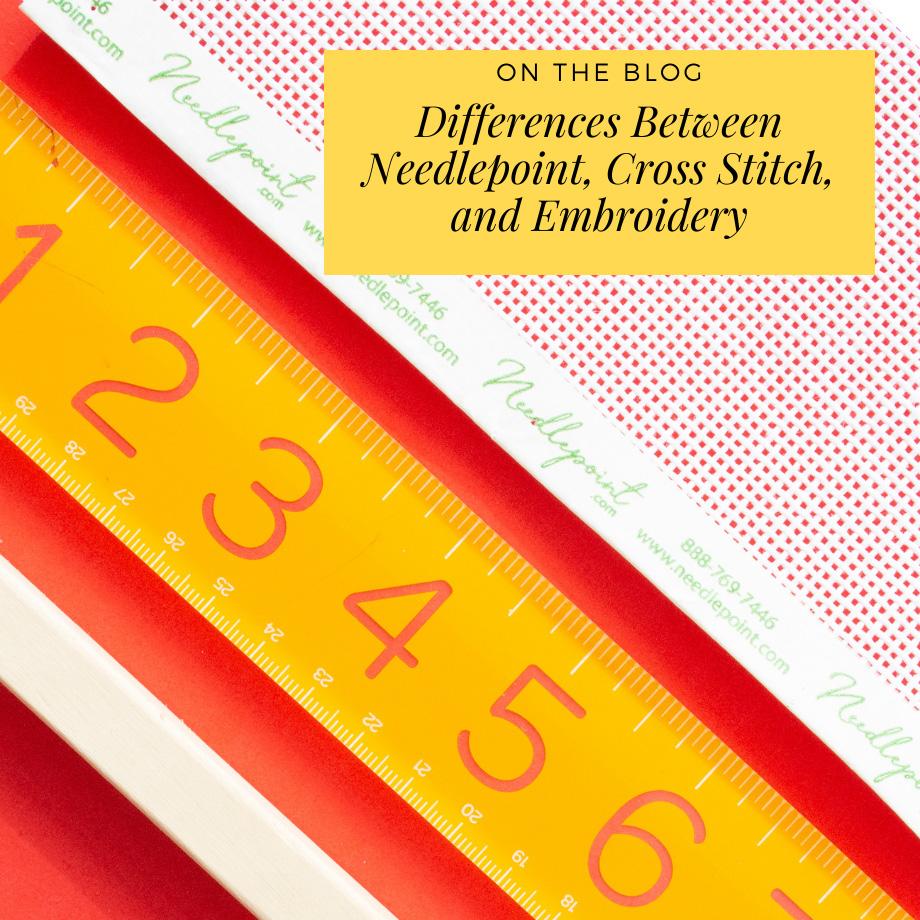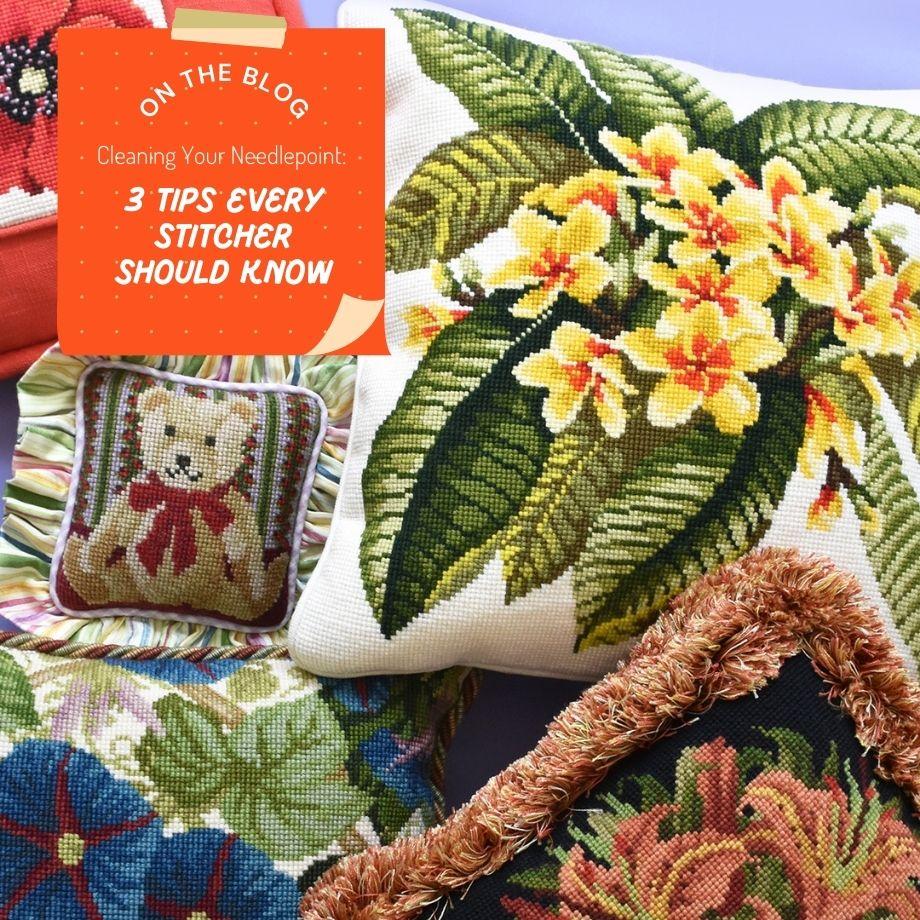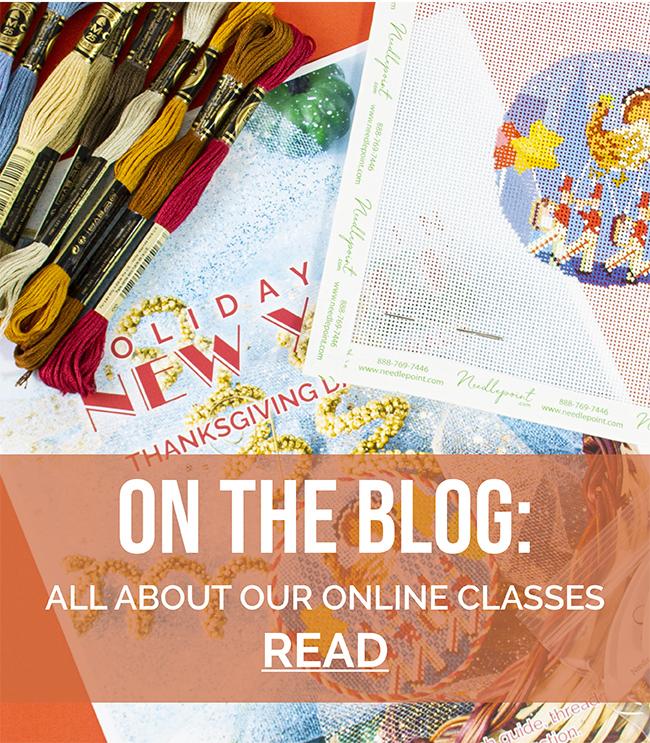Are you thinking about picking up a new hobby? Needlepoint is a relaxing craft that leaves you with a beautiful piece of home decoration, clothing, or an accessory that will catch everyone’s eye. People tend to notice homemade items stitched with care and attention. You can begin creating masterpieces that will take everyone’s breath away when you take up needlepoint. Start by knowing the basics. The differences between needlepoint, cross-stitch, and embroidery aren’t as vast as you might think. Keep reading to find out which you should try.
What Is Needlepoint?
Needlepoint is a surface embroidery technique that covers the top of the fabric or canvas. It’s an old-fashioned art that’s remerging with a younger generation. Designs are created on a fine canvas, though you can use a woven canvas. Most needlepoint uses square canvases and multiple stitch types as well as beading. Unless you use needlepoint kits & supplies, you should draw your pattern on the canvas before beginning your project.
Types of Needlepoint Stitches
Needlepoint requires knowing different stitches. The more you know, the better your project will be when it’s done. Stitches have multiple purposes. Some create unique designs on your canvas, while others secure threads. Each type you choose to use should have a purpose. Needlepoint stitches you should know include:
- Tent stitch. A tent stitch is the most used stitch in needlepoint. It’s a diagonal stitch that crosses over the vertical and horizontal lines of the mesh.
- Basketweave stitch. A line of tent stitches is known as a basketweave stitch. It provides a foundation for other stitches.
- Half-cross-stitch. A half-cross stitch is one that you cross vertically or horizontally across the fabric.
- Continental stitch. Similar to a half-cross stitch, this is a tent stitch you work horizontally over the fabric. With this stitch, the back of the canvas is covered, which makes for sturdier needlepoint.
- Gobelin stitch. This is a diagonal stitch. You cross the thread over a vertical and two horizontal threads to create it.
- Cushion stitch. This stitch consisting of a group of five stitches. You place the longest stitch in the middle. Shorter stitches will flank each side until you get to the smallest stitch.
- Parisian stitch. The Parisian stitch is a long vertical stitch that creates a basket-weave pattern.
- Mosaic stitch. The mosaic stitch involves three stitches and consists of a long stitch flanked by two shorter ones.
What Is Cross-Stitch?
Cross-stitch is a type of hand embroidery, and it’s simple for beginners. The most popular stitch is the: a basic X-shape. The stitches form tiles that come together to create a pattern. Since the stitches create a boxy look, cross-stitch is good for printing slogans and other simple designs. The pattern lays flatter than needlepoint. Cross-stitch designs are typically used as wall hangings, bookmarks, and coasters.
Types of Cross-Stitch
Stamped Cross Stitch
If you buy a cross-stitch kit, it will likely come with the design printed on it. Having the design printed on the canvas makes it easier to navigate your stitches. Once you’ve completed your project, you can wash away the print.
Counted Cross-Stitch
An advanced technique is to count your stitches to determine your design. In this case, the pattern is separate from the canvas. You might draw it yourself or get it from somewhere or someone else (i.e., online, a store, or a friend). When using the counted cross-stitch method, you begin at the center and count stitches outward until you complete your project.
What Is Embroidery?
Embroidery is known as the art of decorating a material with needle and thread, and it involves a variety of stitches, embellishments, styles, and methods you can master. Depending on your canvas type, you can use thin thread or yarn. Embroidery is a general term that encompasses needlepoint and cross- stitch. It also includes quilting and any other crafting done with needles. You can create all sorts of beautiful items with embroidery, whether by hand or machine.
Types of Embroidery
Hand Embroidery
Everyone loves hand embroidery. The most common types of hand embroidery are needlepoint and cross-stitch. You can make personalized, homemade gifts when you master the techniques of this craft. One of the best things about hand embroidery is that you can see the personal touch of the designer in the work. Custom creations feature unique designs with multiple stitch types, and you can typically tell that they’re homemade (usually due to some happy accidents.)
Machine Embroidery
Machine embroidery is commonly used for mass production, such as for textiles or home décor, and it’s used to creates immaculate designs with no imperfections. Machines imprint a design onto the fabric using a software. Machine embroidery is commonly found on:
- Blankets
- Gowns
- Purses
- Tablecloths
- Pillows
- Towels
- Napkins
Needlepoint Versus Cross-Stitch
You can find many similarities and differences between cross-stitch and needlepoint. Though they are both types of hand embroidery, needlepoint is a much more complicated art form. Cross-stitch is often a beginners’ craft on the way to needlepoint. While cross-stitch only involves one type of stitch, needlepoint uses more than half a dozen. You may find cross-stitch limiting when it comes to design choices and the items you can embroider. Needlepoint gives you more options.
Needlepoint and cross-stitch both use canvas, but the way you hold and stretch the canvas is different. For cross-stitch, you use a hoop while you use stretcher bars for needlepoint. Stretch your canvas so it doesn’t distort while you’re doing your project. Furthermore, stretchers make it easier to hold your embroidery project in place.
Needlepoint Versus Embroidery
The differences between needlepoint, cross-stitch, and embroidery are the level of difficulty and stitch type. Embroidery is an umbrella term that encompasses needlepoint and cross-stitch, so it’s not different from either hobby. All three crafts are vintage styles of needlework that date back to China during 30,000 B.C. People have handed the tradition down over the years and evolved it by inventing new designs and stitches.
Whichever type of embroidery you enjoy, both are excellent for relieving stress and helping you relax. The mood-boosting benefits of needlepoint are best understood when experienced firsthand. To get started, check out stitch printed canvas kits from Elizabeth Bradley Designs and Needlepoint To Go. We have a wide collection of prints and canvases to inspire you. Shop our online collection today.



